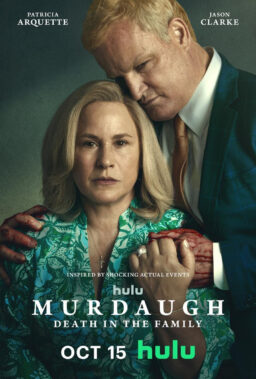There is a shot in “Titanic” that I watched like a hawk. The point of view is from above, as the great ship steams to its destiny. In one apparently uninterrupted piece of celluloid, we see the ship from bow to stern, every foot of it, with flags flying and smoke coiling from its stacks, and on the deck hundreds of passengers strolling, children running, servants serving, sportsmen playing.
I watched it because I knew, logically, that this shot was a special effect. They did not rebuild the Titanic to make the movie. I knew, in general, what to look for – what trickery might be involved – and yet I was fooled. The shot looks like the real thing.
“That was a model shot,” James Cameron said, smiling. “The people were all computer graphics. The way we did it was, we had people act out all of those individual behaviors in what we call a ‘motion capture environment.’ So, a steward pouring tea for a lady seated on a deck chair – that was all acted out and then that motion file was used to drive and animate those figures. The end result is like you said: We pull back down the full length of Titanic, and you see 350 people all over the decks, doing all those different things. The same technique was used for the sinking, when you see hundreds of people on the ship jumping off or rolling down the decks.”
So it’s all f/x. Well, I didn’t expect them to build the Titanic and sink it again. But what I also didn’t expect was a film so completely convincing in its details. There are a few moments the viewer doubts (the portholes look suspiciously bright at night), but in general Cameron’s film is a triumph of reconstructed realism: Inside and out, in good times and bad, when it is launched and when it goes to its grave, the Titanic in this movie looks like a real ship.
James Cameron is, of course, a director who specializes in special effects, and he’s been at the cutting edge since “Aliens” (1986), still the most disturbing of the “Alien” series. Before that he worked valiantly in films where the budget and the technology were not yet there for him (“Piranha II” in 1981, “Terminator” in 1984). After, he was the king of f/x, with such credits as “The Abyss” (1989), “Terminator II” (1991), “True Lies” (1994), and such producer credits as Kathryn Bigelow’s “Strange Days” (1995). The story’s the thing
There has always been the choice in Cameron’s work to insist on a story; he doesn’t lazily throw cardboard puppets into explosions and chases. When time ran out on the production schedule for “The Abyss,” and he had to make a deadline decision about what to finish for the release print, he kept the relationship story between aquanauts Ed Harris and Mary Elizabeth Mastrantonio. Not until the Directors’ Cut could we see the spectacular special effects (a city rising from the sea, a tidal wave) that he was willing to surrender before he short-changed his story.
In “Titanic,” there are three stories: the historic story of the sinking of the grandest ship of its time; the fictional story of a young female passenger and the men in her life; and the modern story of the Titanic in its grave, 2 1/2 miles beneath the sea.
There is a lot of footage of the real Titanic on the bottom, some fake footage, and some that dissolves from one to the other. Cameron wasn’t content to buy footage from documentaries about the search for the Titanic; he shot the film’s undersea footage himself, new for this film: “It’s all our own. I made the dives and operated the camera and we lit it and everything.”
You saw the Titanic, I said.
“Yes. Sat on the deck 12 times. The IMAX film stuck the camera inside the sub; it shot out of the view port, which was very limiting. We built a camera that went outside the sub and could pan and tilt and do all the normal movie camera type stuff. Ironically, we totaled the number of hours that we spent at Titanic during the course of those dives and it was more than the number of hours that the passengers spent on board.”
That last shot, I said, where we float on the bottom along the wrecked ship’s deck, and then . . .
“In that particular case it’s a model,” he said, “but we did generate a lot of footage of the real ship that’s in the film. Also interiors of the ship as it sits right now on the bottom of the ocean, and then fake interiors as well.”
It’s all so seamless.
“It’s consistent with what Titanic looks like. We couldn’t explore the whole interior of the ship. We could only get a glimpse into some areas. We went down some corridors to the D-deck level and saw a lot of the remaining hand-carved woodwork, the wall-paneling, the beautiful ornate carved doors. A lot of it is still there. It’s very, very cold, which helps preserve things. There are marine organisms that will eat wood, but in certain areas the wood was covered with white-leaded paint that protected Titanic.”
“Titanic,” he calls it. Not “the Titanic.”
“That’s how they referred to liners in those days. The great ships were places, not things. They were an entity almost. You’d say, `I’m crossing in Mauritania.’ ”
I was sitting in Chicago, drinking coffee with a man who had been as close to the Titanic as he was to me.
“It was eerie,” Cameron said. “I love to dive and I love shipwrecks, so the adrenalin was spiking. But there’s something about Titanic that’s sort of mythic, that’s storylike and you don’t quite believe it. It’s almost more like a novel than an event that really happened – and yet here’s the wreck. It really happened. People died here. That was the thing I had to take away. Not just the images of a wreck. I had to take away the sense of responsibility to do it right and to honor Titanic. The film that resulted is an expression of what happened there.”
“Titanic,” which opens Dec. 19, is said to be the most expensive movie ever made. Perhaps it is. Few films contemplate financing an expedition to the bottom of the Atlantic just to get things rolling. When “Titanic” missed its original opening date last summer, there were rumors that the film was in trouble, that it would be a disaster in the tradition of “Raise the Titanic!” (1980), a film that inspired its producer, Lord Grade, to observe, “It would have been cheaper to lower the ocean.”
But the film’s world premiere, in November at the Tokyo Film Festival, was a triumph, and now the word is trickling forth from press screenings that, whatever its cost, “Titanic” is value for money, a marriage of imagination and technology in the Hollywood tradition of well-crafted epics.
The framing story involves an old lady, a Titanic survivor, who sees TV documentary footage of a sketch drawn on board all those years ago. She visits the documentary filmmakers and tells her story, which is reconstructed in flashbacks. Kate Winslow plays the survivor as a young girl, Billy Zane is her rich and arrogant fiance (who loves her all the same), and Leonardo DiCaprio is the kid from steerage who becomes her lover and, eventually, her savior.
Around their story all of the details are fashioned of fact and fiction. The real Titanic took a long time to sink, and the film recreates an eerie feeling of how that time was spent by the passengers – both first class ticket holders, and those with cheaper tickets who are temporarily locked below, because there were not enough lifeboats for everyone.
“Many died in terror, you know,” Cameron said. “When you look at the numbers, if you were a third class male on Titanic you stood a 1-in-10 chance of survival. If you were a first class female, it was virtually a 100 percent survival rate. It broke down along lines of gender and class. If you were a first class male, you stood about a 50-50 chance of survival. And the crew took it hardest.
“Of the 1,500 who died, 600 or 700 of them were crew members. The people who stayed in the dynamo room and the engine room, to keep the lights on so that the evacuation would not become panicked – who stayed till the end and missed their opportunity to leave the ship – that’s something you’d see less of today.”
I can only imagine, I said, the conditions on the set when you were filming the scenes where Titanic is almost vertical and people are sliding straight down and bouncing off air vents and deck walls.
“That was our most dangerous work,” Cameron said. “The stunt team worked for weeks in advance, videotaping each one of those stunts and rehearsing it and showing me the tapes. It was all intensely pre-planned and the set was made about 50 percent out of rubber at that point, all padded up. But there’s always an X-factor. We had 6,000 stunt person days on this film – the equivalent of one man doing stunts seven days a week for 16 years. But it was all happening at once. We did have a guy break his leg, which I hated. I don’t think anybody should get hurt for a film. So I decided to do more of it with computer graphics. Here was a case where the effects actually stepped in and took the place of some of the more dangerous stunts – like the guy falling who hits the propeller of the ship and bounces off. But a lot of those other stunt falls are real. If you look at our stunt credits in the film it’s like the Manhattan phone book.” It was such a blow to human confidence, I said, that this great ship, unsinkable, the largest ever, would . . .
“The great lesson of Titanic for us, going into the 21st century,” he said, “is that the inconceivable can happen. Those people lived in a time of certainty; they felt they had mastered everything – mastered nature and mastered themselves. But they had mastered neither. A thousand years from now Titanic will still be one of the great stories. Certainly there have been greater human tragedies during this century, but there’s something poetically perfect about Titanic, because of the laying low of the wealthy and the beautiful people who thought life would be infinite and perfect for them.” What would you have done? Anyone seeing this movie, I said, will have to ask themselves this question: Would I have fought to get on a lifeboat? Would I have pushed a woman or a child out of the way? Or would I have sat down in the lounge and called for a brandy, like Guggenheim, and faced the inevitable with grace?
“The sinking of Titanic took 2 hours and 40 minutes. People had time to think about their doom and to make choices. It wasn’t instantaneous like the crash of the Hindenberg. This was about moral choices, and so it asks every member of the audience to question their own moral choices, their own courage, their own kind of fiber.”
He sighed. “I don’t know what I would have done. Well, I know what I would have done if I had been taken back on a time machine and put on the deck of Titanic. I know exactly how I could have survived without hurting anybody else. But if I was really there, with my personality but without my current knowledge, I don’t know what I would have done.”
What would the time traveler have known to do?
He smiled. “Oh, it’s very simple. You just wait until Boat No. 4 is pulling away from the ship and dive in at the front off the B Deck level and swim to it, because it was only half full anyway.”











